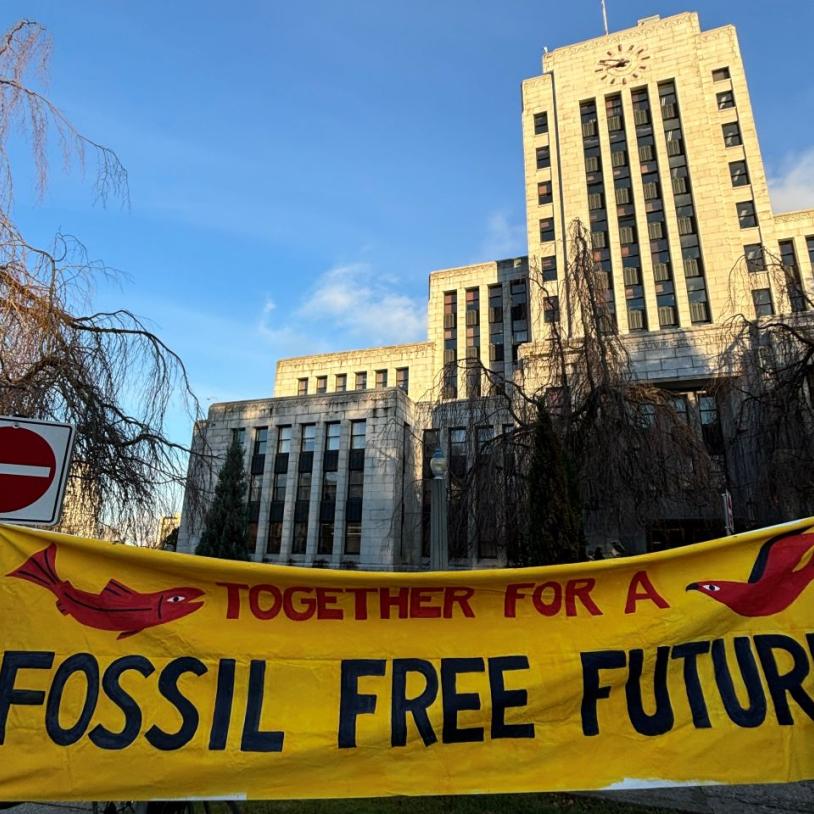Opposition mounts against massive Site C hydroelectric dam
Monday, May 3, 2010
B.C. First Nations and environmental groups are opposing the provincial government’s decision to give BC Hydro the green light to build a massive hydroelectric dam on the Peace River, in northeastern B.C.
“We are gravely concerned about this, given the government’s recent watering down of environmental regulatory processes,” said Chief Roland Willson of the West Moberly First Nations.
“That could enable this mega project to move through with little or no challenges to the application.”
Campbell and members of the Liberal Cabinet gathered at Hudson’s Hope on April 19 to give approval to move to stage 3 of the regulatory process for the $6.6 billion Site C dam project.
This stage is expected to take two years.
Treaty 8 Nations said they are disappointed that the Stage 2 consultation process with BC Hydro remains incomplete, making the government’s decision to move to Stage 3 premature.
“Treaty 8 First Nations continue to be frustrated with British Columbia’s disregard of their treaty rights when it comes to the cumulative impacts of resource development,” said Tribal Chief Liz Logan.
“The government has decided to move forward on Site C without ever having addressed past infringements of treaty rights respecting the construction of the W.A.C. Bennett and Peace Canyon Dams.”
The Treaty 8 First Nations are concerned with the integrity of the regulatory processes.
The Site C dam, which was first proposed in the 1970s, will be the third dam and hydroelectric generating station on the Peace River.
One proponent of the Site C Dam said the opposition needs to consider the economic benefits of the project for northern communities.
“The opponents of the Site C Dam, both environmental and First Nations groups, have legitimate concerns, but they also have to acknowledge that this project will create 35,000 direct and indirect jobs in a region that needs them,” said Chris Feller, president of the Allied Hydro Council of B.C.
His group is made up of building trades unions, which jointly negotiate collective agreements for BC Hydro construction projects
“The training opportunities are fantastic, providing B.C. with a new supply of apprenticeships in key skilled trades that would be impossible otherwise.”
Premier Gordon Campbell and Blair Lekstrom, Minister of Energy, Mines and Petroleum Resources are promoting the proposed project as a major green power initiative.
They said the project will provide clean, reliable and low-cost power for more than 100 years.
In sharp contrast, Joe Foy, national campaign director with the Wilderness Committee said Site C has nothing to do with green energy.
“It actually looks like much of the electricity from Site C will be used to develop gas fields in Northern B.C., which will then be used to power the tarsands,” he said. “If the environmental and regulatory review looks at the facts instead of the B.C. government’s spin, the Site C project won’t be going ahead. It makes no sense from an environmental or economic perspective.”
Sierra Club B.C. executive director George Heyman agreed.
“The huge loss of boreal forest due to flooding would eliminate a major carbon sink for B.C., and increase our CO2 emissions far into the future as reservoir matter decays,” he said.
The dam would be 60 metres high above the river bed and the reservoir would be 83 kilometres long.
Both Heyman and Foy are concerned that the project would flood a large share of the prime agricultural land in the Peace River Valley.
There are also concerns about the dam’s impact on wildlife and migration corridors.
“Coupled with existing forestry, mining and oil and gas development, the cumulative impacts of the Site C dam reservoir will cause irrevocable damage to fish and wildlife habitats, local agriculture and flooding of important cultural and archaeological sites,” said Chief Lynette Tsakoza of the Prophet River First Nation.
In addition to these problems, many opponents of the project believe the provincial government and BC Hydro haven’t adequately demonstrated the real need for energy.
Heyman said B.C. needs to develop a full provincial framework for future energy development before making a final decision on Site C.





